Back when I was a beginner climber, I was impatient and wanted to try hangboarding to get really good really quick. Before I went off and did so, I asked my more experienced climbing friends what they thought about it. Pretty much all of them told me to hold off on hangboarding until I had more climbing experience.
As a general rule, it is not recommended for beginner climbers to hangboard. Beginners have not yet built up the necessary finger and grip strength to hangboard safely. Their climbing ability will typically improve rapidly even without the use of a hangboard.
While hangboarding is a fantastic way to train, it is not recommended for beginners for a few reasons. There are a lot of risks associated with it and if done wrong, it can lead to serious injury. This article explores the benefits that come with hangboarding and explains why it isn’t recommended for beginners.
If you are interested in seeing what the current prices are for the most popular rock climbing training aids, you can find them on Amazon by clicking here. Using the Amazon affiliate link above and/or other links in the article helps support this website.
Hangboarding as a Beginner Climber
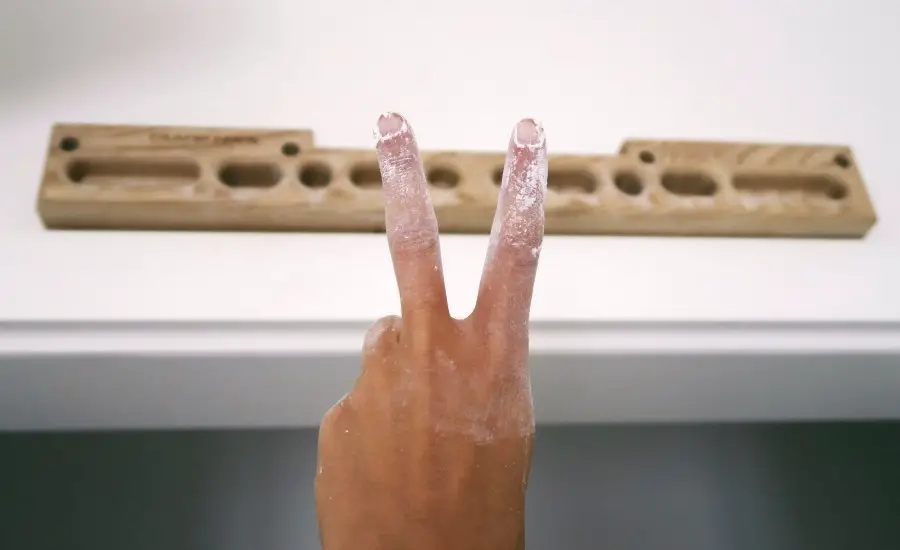
Before we go any further, we need to talk about who is actually a beginner climber. To do so, check out my article linked here which goes into detail about who qualifies as a beginner and who doesn’t. If you are not a beginner climber according to that definition, you may be an intermediate.
Hangboarding for the upper end of intermediate climbers is actually recommended to go from intermediate to advanced. To see if you meet this criteria, check out my article linked here.
Training with a hangboard (also known as a fingerboard) can be very effective if done properly. However for most beginners, this will be more of a potential detriment to their climbing progression than a benefit. As a beginner, you have not yet built up the needed finger or hand strength to hangboard without incurring a large risk of injury.
This begs the question, when should a climber start hangboarding?
As a general rule, you should not start hangboarding (fingerboarding) until you have been consistently climbing for over one year and have stopped improving. In addition, it is recommended that you are able to climb at least 5.11a before using a hangboard to maximize its benefits.
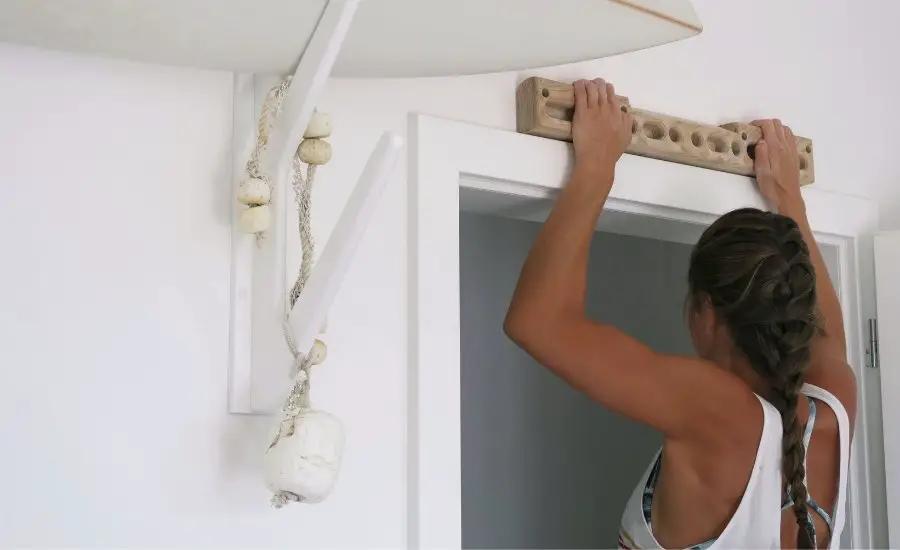
These guidelines are recommended because beginner climbers will improve quite a lot just by climbing more. Climbing does not just require a lot of finger and grip strength to be good. Having good technique, footwork, and body position are arguably more important to be a good climber.
Even if a beginner has incredible grip and finger strength, their lack of good climbing technique will prevent them from putting it to use.
Benefits of Beginner Climbers Hangboarding
Well, based on the fact that you found this article, you probably know the main benefits of hangboarding already. As such, I will try to keep this short and to the point.
Hangboarding helps improve a climber’s finger, grip, back, and core strength. In addition, hangboarding helps strengthen the tendons in the fingers and hands.
That being said, beginners will receive the same benefits as anyone else who uses a hangboard. Hangboards don’t discriminate based on climbing experience. They just punish people for using them with improper form or using them too early in their climbing career.
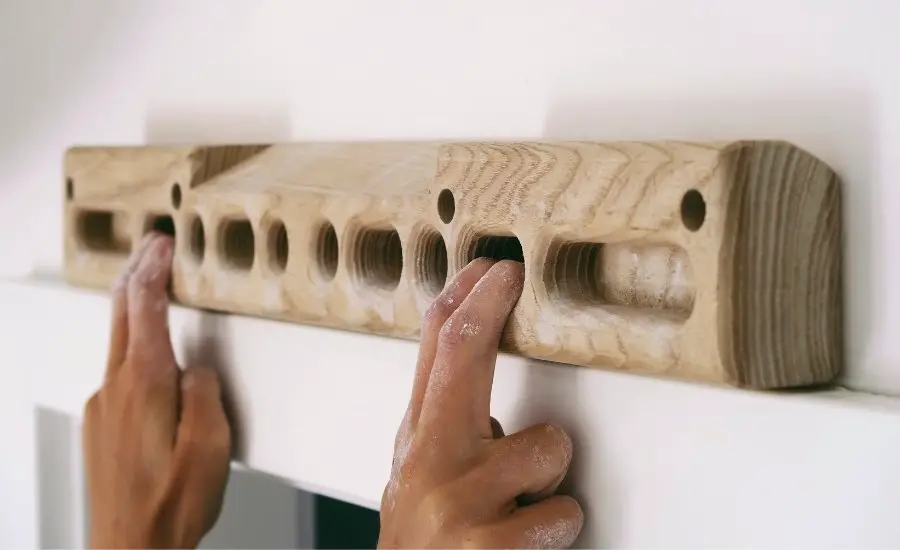
Drawbacks of Beginner Climbers Hangboarding
The most obvious and most serious drawback to hangboarding is the high likelihood of sustaining an injury. While the most serious injuries caused by hangboarding can ground climbers for months, the more minor injuries can keep climbers out for 1-2 weeks.
Beginners are more likely to sustain injuries from hangboarding than advanced climbers because their finger tendons are weaker and their skin is not as calloused yet.
Minor Injuries
Below is a quote from a scientific research article pertaining to the most common hangboarding injuries.
The most common hangboard-related injuries are finger pad skin injuries caused by friction between the skin and grips. These may be blisters, tears, or general soreness. While minor compared to structural injuries, skin injuries are very common due to the high shear and normal stress applied to the skin. When sustained, the athlete will be unable to continue training the responsible grip position at the same intensity until the skin heals (~5 -15 days). Therefore, skin injuries can greatly impede training.
Michael Anderson, “An Innovative Hangboard Design to Improve Finger Strength in Rock Climbers”, Published in Procedia Engineering Volume 147, 2016, Accessed via SciencedDirect.com
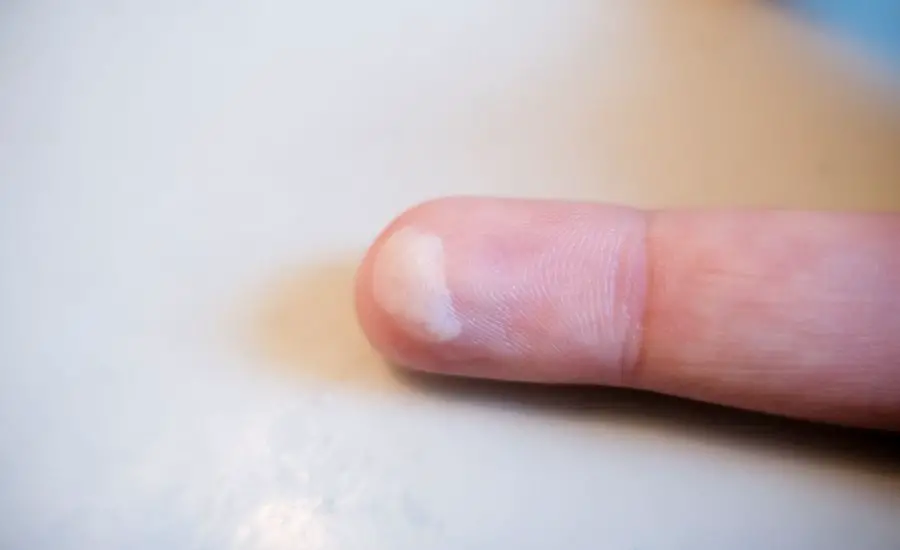
Taking 1-2 weeks off may not seem like a big deal but for beginners it can be. For example, let’s take two beginner climbers: Climber A and Climber B. Both climbers A and B climb twice a week.
Climber B decides to add in hangboarding training in addition to their climbing sessions. Over the span of 3 months, Climber B has had to take a total 4 weeks off due to “minor” injuries sustained by hangboarding. Climber A did not need to take any such breaks.
Assuming the same natural climbing ability, Climber A will be a much better climber after the 3 months than Climber B. They will not only have better climbing technique but will be more experienced and will likely have similar finger and grip strength as Climber B due to Climber B’s time off.
Major Injuries
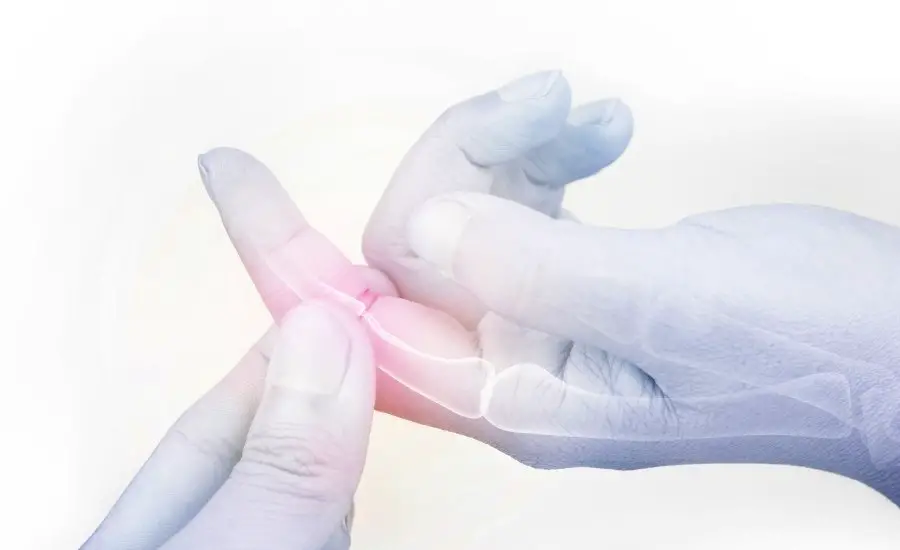
In addition to the more minor injuries, hangboards are known to cause more major, structural injuries as well. Below is a quote from a scientific research article relating to structural injuries caused by hangboarding.
Hangboard training often leads to overuse injuries including shoulder, elbow, and wrist tendonitis, as well as injuries in the systems that enable finger flexion (to include the finger flexor and extensor muscles in the forearm, finger flexor tendons, annular pulleys in the fingers, and the interphalangeal joints in the fingers).
Michael Anderson, “A Novel Tool and Training Methodology for Improving Finger Strength in Rock Climbers”, Published in Procedia Engineering Volume 112, 2015, Accessed via ScienceDirect.com
Is hangboarding really worth the risk to get better if you are already improving at a fast rate? I do not think so.
The Bottom Line
Even though hangboarding is a great way for advanced climbers to train, beginners should not use them just yet. Beginners have not yet built up the needed finger strength to safely hangboard. They will advance quickly enough without hangboarding and should save that risk for later in their climbing careers.
